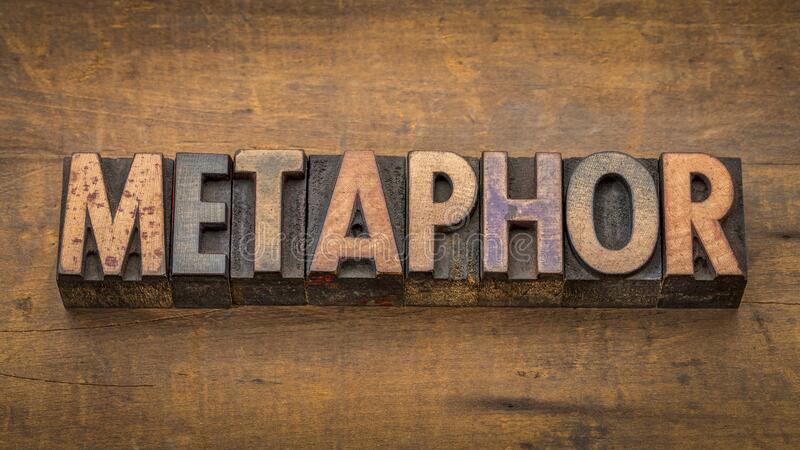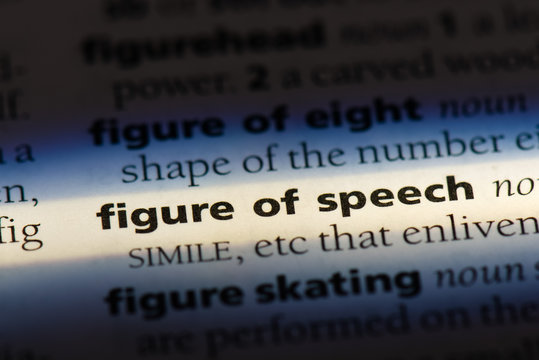They are just two examples of figurative tools to enhance literary and artistic compositions. Your content will be more engaging and intriguing if you use literary techniques like allegory and metaphor to assist you in writing. They allow you to write better since they add interest and depth to your work.
While they may appear similar, they are distinct from one another in many ways. You will need metaphors and allegories; As a matter of fact, you may have used them without realizing it. Yet, before you can use them in your writing, you must first have a solid understanding of them.
Keep reading if you want to learn the concept of allegory and metaphor and the distinctions between the two. It is the reason why I put together this article.

Metaphor; In A Nutshell:
A metaphor is an expression of speech derived from the Greek word “metaphora.” It compares one thing to another that is typically unconnected to enhance the rhetorical effect. A broad term that can incorporate other literary terms, such as analogies, is a metaphor. The most popular metaphors use the pattern “X is Y.” But the term can refer to various expressions.
Metaphors come in various forms, from the basic to the implied. There are occasions when authors will draw parallels that don’t fully function as actual metaphors. Examples of this include mixed metaphors, a combination of metaphors that aren’t compatible with each other, and dead metaphors, which are overused phrases with a lack of symbolic potencies, such as “heart of gold.”
A metaphor does not use the words “like” or “as.” Instead, it uses the quality of one thing to represent another.
Examples:
The following are a few illustrations of metaphors:
- “He removed the weight from his head.”
- Nobody loved him because he was the family’s outcast.
- She is a hard-working person and is currently in her office amidst a pile of work.
- “He doesn’t know what’s going on in the real world.” I think he’s living in a fantasy.”
Literary Examples of Metaphors:
- The first abstract is from Romeo and Juliet.
“But soft! What light through yonder window breaks? It is the East, and Juliet is the sun!” —Romeo. (William Shakespeare)
- The second one is from “The Fault in Our Stars.”
“The sun was a toddler insistently refusing to go to bed: It was past eight-thirty and still light.” (John Green).
How To Use Metaphors?
It is common practice to use metaphors in writing. It
enhancing the meaning of the content and producing effects that go beyond the clear meaning of the phrase.
The following are among the many applications of metaphors:
Building on Specific Beliefs and Opinions:
A great example is when a person described as a rat elicits an altogether different set of feelings and images than one defined as a lion.
Delivering a concealed message:
Metaphors transmit unsaid messages and notions.
Improve the image:
Marketing, for example, employs metaphors to improve the image of the seller’s goods through the use of a metaphorical lens. An illustration would be: “Even when the night is at its darkest, Turner’s light is your sun!”
Allegory; In A Nutshell:
Allegoria, from which the English word “allegory” comes, is a Latin term meaning “speaking in such a way as to signify something else.”For an allegory to be effective, the story’s various characters must be able to represent both real-life people and abstract concepts in some way. Scenarios in a story may sometimes mirror real-life or historical events without stating this connection.
Different allegory types:
A biblical allegory is one sort of allegory. Whereas the others include scriptural, classical, political, and contemporary allegory. Similar figurative expressions include fairy tales, fables, and parables. Let’s have a look at them.
Biblical Allegory
The clash between right and wrong is a common theme in biblical allegory, which uses biblical elements. Biblical allegory refers to symbolic interpretations of the Bible rather than literal ones.
Classical Allegory
Plato’s Allegory of the Cavern is an excellent demonstration of a literary allegory. Plato depicts human habitation as akin to that of a cavern.
A fire blazing within the cavern is the only light source, casting shadows on the walls. They are unable to perceive things in their proper form.
Using the cave as a metaphor for human existence, Plato paints a clear distinction between human experience and logic, or faith and wisdom.
Modern or Contemporary Allegory:
Modern allegory uses simple items and animals in a humorous, absurd, or upbeat manner. The goal is to deliver an uplifting and motivational message and convey a topic of ethics, morals, and principles.
Literary Illustrations Of Allegory:
The first one is George Orwell’s creation “Animal Farm”:
It is one of George Orwell’s best-known works of humorous allegory. It narrates a story where farm animals rise against their human farmer. They envision a society where everyone has the freedom, joy, and dignity to live their lives as they see fit. The uprising, however, is unsuccessful in accomplishing its goals, and in the end, the farm reverts to its initial condition.
Using the allegory of the farm, Orwell slammed the 1917 Russian Revolution and the Soviet Union’s subsequent Communist era in his book Animal Farm.
The Next Example is John Bunyan’s Novel “The Pilgrim’s Progress”:
The Pilgrim’s Progress story follows Christian, a person who leaves his hometown, known as the “City of Disaster,” in search of the “Sacred City.” According to the events in this tale, the “City of Disaster” stands in for “the world in which we live,” while the “Sacred City” symbolizes “Heaven.” Christian’s enormous burden is the realization of his wrongdoing, which he attributes to having “the book in his grasp.”
It is a biblical allegory that shows what the author deems necessary for salvation.
How Do Authors Use Allegories In Their Writing:
Explaining the idea of a story:
The basic theme of an allegory is to convey a moral message. In order for the author to convey their message, they may invent characters or elements that have a specific significance. Despite the subtlety of this message, the author supplies a few indicators.
To Conceal Criticism:
Allegory is a way for writers to critique the systems or a person’s behavior without crossing the line. The author may do this to shield themselves from potential violent responses from the subject.
Disparities Between A Metaphor and Allegory:
Both allegories and metaphors use comparisons to convey symbolic meaning. But there are a few crucial differences between the two.

Length:
Most metaphors are short figures of speech with only a few words. But long metaphors, such as extended metaphors, can be several paragraphs long. Unlike metaphors, an allegory can take up the entire plot.
Material:
Metaphors consist of simple terms and expressions. For instance, in the line “All the world’s a stage” by William Shakespeare, the primary components are “the world” and “a stage,” which together provide a precise comparison at the sentence level. Allegories are more intricate and frequently take the shape of a novel, complete with fictitious characters and events that are meant to make a wider connection over several pages.
Goal:
When writers use metaphors, they compare two objects and assign a particular attribute to the first. In contrast, authors use allegories in more daring ways. They do it to express broad, sometimes abstract, or complex ideas or to remark on society through a misleading hidden meaning.
The Real Meaning:
There is always a deeper hidden meaning underlying an allegory. Readers can easily grasp some allegory’s underlying meaning. But this isn’t always the case. Sometimes readers have to dig a little deeper to find the real meaning.
Metaphors also exhibit secret meaning, but to a lesser degree. For instance, if somebody says to Randy, “You’re a cockroach,” and he doesn’t have any idea of a cockroach, this metaphor seems to have an underlying meaning. But most metaphors are easy to understand.
Final Words:
Metaphors and allegories are tools that professional writers should be familiar with. They help with improving writing skills and developing ideas. The use of comparison aids in comprehending concepts that are otherwise difficult to grasp. You can do it in your writing by using both metaphor and allegory. These elements can help your readers better understand what you’re saying and improve your writing. The more you read and practice metaphors and allegories, the better you’ll get at your craft.
Read More From Us:
We hope that this article is detailed enough that it will clear out all the concepts regarding metaphor, allegory, and their prominent differences. However, if you are looking for an in-depth source of information regarding other aspects of figurative language, please click here and read our extensive article on Figurative Language Check.